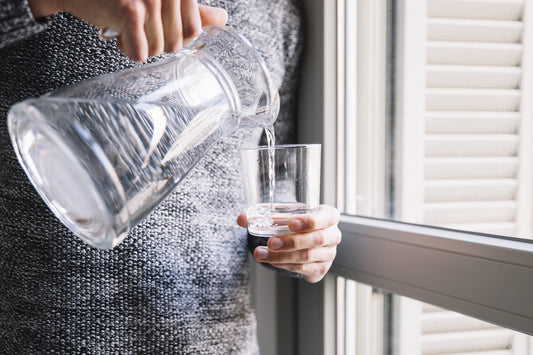Introduction
Water, the elixir of life, is a basic necessity that we often take for granted. However, the purity of the water we consume daily is not always guaranteed. This article will delve into the murky depths of water contamination, shedding light on common contaminants and offering practical solutions for their removal.

The Reality of Water Contamination
Defining Water Contamination
Water contamination is a pervasive issue that refers to the presence of harmful substances in water. These substances, known as contaminants, can be physical, chemical, or biological entities that degrade water quality and pose health risks.
The Root Causes of Water Contamination
Natural Causes
Natural causes of water contamination include substances like arsenic, radon, and uranium that are naturally present in the earth's crust and can leach into groundwater.
Human-Induced Causes
Human activities significantly contribute to water contamination. Industrial waste, agricultural runoff, sewage, and even the plumbing in our homes can introduce harmful substances into our water supply.
A Closer Look at Common Contaminants in Drinking Water

Lead: The Silent Invader
Lead, a toxic metal, can find its way into your water through corrosion of plumbing materials. This silent invader is particularly dangerous for children, as it can impair their cognitive development.

Chlorine: A Double-Edged Sword
Chlorine is commonly used to disinfect water, but it's a double-edged sword. While it kills harmful bacteria and viruses, excessive chlorine can lead to respiratory issues, skin irritation, and other health problems.

Fluoride: Friend or Foe?
Fluoride is added to water supplies to prevent tooth decay. However, too much fluoride can cause dental fluorosis, a condition that discolors or pits the teeth, and may lead to other health issues.

Bacteria and Viruses: Invisible Threats
Bacteria and viruses are biological contaminants that can cause illnesses ranging from mild gastrointestinal discomfort to severe diseases like cholera and typhoid.

Pesticides: The Unseen Residue
Pesticides used in agriculture can seep into groundwater, contaminating our water supplies. These chemicals can disrupt hormonal balance and increase the risk of certain cancers.
The Health Implications of Water Contaminants
Short-Term Health Effects
Short-term health effects of drinking contaminated water can include gastrointestinal illnesses, skin irritations, and respiratory problems, depending on the contaminant.
Long-Term Health Effects
Long-term exposure to certain contaminants can lead to serious health conditions like cancer, neurological disorders, hormonal disruptions, and developmental issues in children.
Detecting Contaminants in Your Water: A How-To Guide

Home Testing Kits
Home testing kits are a convenient way to check your water for common contaminants. These kits usually involve collecting a water sample and adding a reagent that changes color to indicate the presence of contaminants.

Professional Water Testing Services
For a more comprehensive analysis, you can send a water sample to a professional lab. These services can detect a wider range of contaminants and provide more accurate results.
Effective Methods to Purify Contaminated Drinking Water

Boiling: The Simplest Method
Boiling water is a straightforward method to kill biological contaminants. However, it doesn't remove chemical contaminants and can even concentrate them due to evaporation of water.

Filtration: A Variety of Options
Activated Carbon Filters
Activated carbon filters are effective at removing organic compounds and chlorine. They work by adsorbing (not absorbing) contaminants onto the surface of the carbon.
Ceramic Filters
Ceramic filters have small pores that can filter out bacteria and protozoa. Some also have a coating of silver to kill bacteria that may get trapped in the filter.

Distillation: The Thorough Approach
Distillation involves boiling water and collecting the steam, which condenses back into water. This process can remove most contaminants, but it's energy-intensive and may not remove certain volatile compounds.

Reverse Osmosis: The Comprehensive Solution
Reverse osmosis systems force water through a semi-permeable membrane, effectively removing a wide range of contaminants. However, they can be expensive to install and maintain.
Conclusion
The quality of your drinking water is a crucial aspect of your health. By understanding the common contaminants and how to remove them, you can ensure that the water you consume is safe and clean. Remember, the journey to good health begins with clean water!
FAQs
What are the most common contaminants in drinking water?
Lead, chlorine, fluoride, bacteria, viruses, and pesticides are among the most common contaminants in drinking water.
How can I test my water for contaminants?
You can use home testing kits or hire professional services for a comprehensive water analysis.
Does boiling water remove all contaminants?
Boiling water can kill biological contaminants, but it doesn't remove chemical contaminants.
What is the most effective method to remove contaminants from drinking water?
The effectiveness of a method depends on the type of contaminant. Filtration and reverse osmosis are generally effective for a wide range of contaminants.
Is bottled water free from contaminants?
Not necessarily. Bottled water is not always free from contaminants and can also contribute to environmental pollution due to plastic waste.
Attribute Images from: aleksandarlittlewolf, Jerzy Górecki, Sten Ritterfeld, Freepik, Bruno, mego-studio, emersonbegnini, PublicDomainPictures, Josch13, Pixabay
People also search for Hot Water Dispensers





